It is time for our 17th Annual Gala Fundraiser honoring this year’s CSM Silver Surfer honorees!
The California Surf Museum invites you to attend the 17th Annual Gala Fundraiser as it celebrates its 39th anniversary. Since 1986, CSM has been collecting and preserving the surfing history and artifacts of this popular lifestyle sport and culture as well as producing fascinating exhibits and dynamic educational programs. The funds generated from the Gala help the museum continue these efforts.
The 17th Annual Gala will be held on Saturday, November 1, 2025 from 2-8 pm at the oceanfront Seabird Ocean Resort & Spa, 101 Mission Ave, Oceanside, California. Overlooking there Oceanside Pier and the Pacific Ocean.
The event begins with a 2 pm cocktail hour on the outdoor patio adjacent to our silent auction room with dinner service in the main ballroom following at 4pm. Once meal service is completed, the excitement begins with a live auction of surfboards made specifically for this event. Our evening is then completed with the presentation of the Silver Surfer award to this year’s honorees.
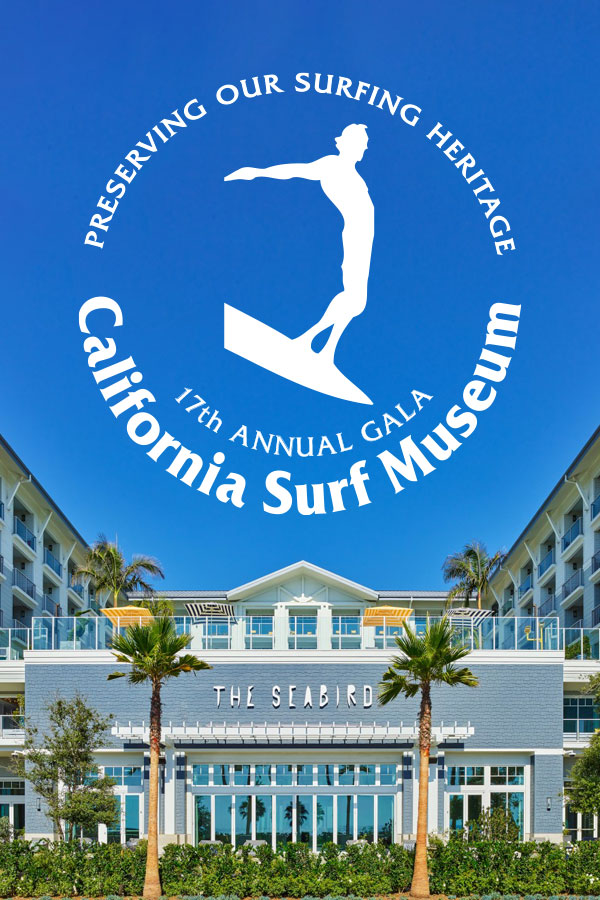
2025 Honoree recipients of the
California Surf Museum's Silver Surfer Lifetime Achievement Award
Endless Summer Filmmakers: Bruce Brown (RIP) and Dana Brown
Surfers: Mike Hynson (RIP), Robert August, Robert “Wingnut” Weaver, Pat O’Connell
Honorary Chair: Jericho Poppler, World Champion and 2017 Silver Surfer
All photos and bios acquired from the Encyclopedia of Surfing.
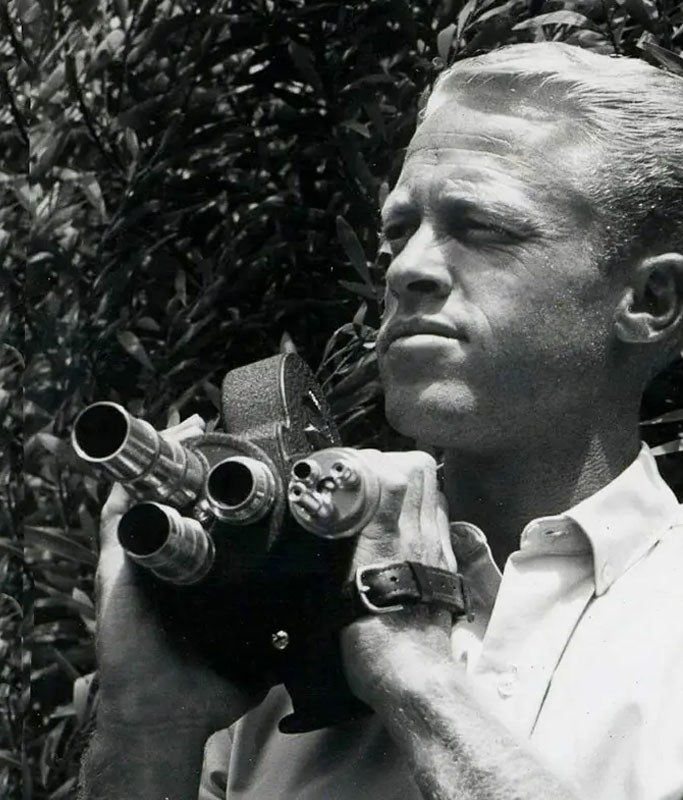
-
Bruce Brown
Endless Summer Filmmakers
Learn More
Oscar-nominated surf moviemaker from Southern California; producer of 1966’s The Endless Summer, the sport’s best and best-known movie. Brown was born (1937) in San Francisco, California, spent his first nine years in Oakland, then moved with his family to Long Beach, in southwest Los Angeles County, where he began surfing.
Along with hundreds of other young surfing fanatics, Brown went to the local Elks Club auditorium whenever original surf filmmaker Bud Browne barnstormed into town to screen his latest movie. Brown himself made his first surf movie, an 8-millimeter short, while stationed on a navy submarine in Honolulu in 1955; two years later, back in California, surfboard-maker Dale Velzy bought Brown a new 16-millimeter movie camera and paid his way to Hawaii to shoot Slippery When Wet, Brown’s first feature-length surf film. Slippery was easygoing, colorful, neatly edited, and scored by West Coast jazz favorite Bud Shank—but the movie was in large part defined by Brown’s smooth and casual narration. Brown, Browne, Greg Noll, and John Severson were the only surf filmmakers at the time.
Surf Crazy (1959) and Barefoot Adventure (1960), Brown’s next two movies, resembled Slippery, and were filmed exclusively in California, Hawaii, and Mexico. Surfing Hollow Days (1961), Brown’s fourth movie, spotlighting California power surfer Phil Edwards, branched out to Australia and New Zealand, and also showed Edwards on the first filmed ride at Pipeline.
Brown’s fifth movie, Waterlogged, was a rush-job compilation film that gave Brown something to put on the market in 1963. That year he set out with California surfers Mike Hynson and Robert August to film The Endless Summer, a semidocumentary on “the search for the perfect wave.” The $50,000 film debuted in the summer of 1964 and was shown in the same manner as Brown’s previous films, on the beach-city circuit, with Brown himself driving from auditorium to auditorium to do live-narration screenings. He added a recorded narration in 1965 and showed the movie in Wichita, Kansas, where for two weeks it outsold My Fair Lady.
The following year, Endless Summer was blown up to 35-millimeter, re-edited slightly, and put into movie houses across the country to rave reviews: Newsweek named it one of the 10 best films of 1966; Timemagazine called Brown the “Bergman of the boards.” Writer Tom Wolfe, meanwhile, in his otherwise acerbic 1966 essay “The Pump House Gang,” had nothing but nice things to say about the young California surf moviemaker. “Bruce Brown has the money and The Life. He has a great house on a cliff about 60 feet above the beach, [and] a rain-barrel old- apple-tree Tom Sawyer little-boy roughneck look about him, like Bobby Kennedy.”
Brown provided footage for ABC and CBS surfing specials in the mid-’60s, and won two Cleo Awards in 1964 for his work on a Kodak Instamatic ad campaign. On Any Sunday, Brown’s 1971 motorcycling movie, co-produced by actor Steve McQueen, earned Brown an Academy Award nomination for Best Documentary. Four years later he produced The Edge, a mostly-neglected sports documentary. Brown then retired and spent 20 years restoring and racing cars, playing the stock market, and deep-sea fishing.
In 1992 he came out of retirement to begin work on Endless Summer II. Unlike the original, the sequel was backed by a studio (New Line), and had a Hollywood budget ($3.5 million) as well as a film crew. But the new movie, while beautifully photographed, didn’t have the magic of the original. “Brown isn’t as well-versed as he once was,” Surfer magazine wrote in its review, “and his narration, so effortless and warm in the late ’50s and early ’60s, now sounds a little forced.” Brown had in a way become the victim of his own success; virtually every post-1964 surf movie had borrowed from Endless Summer, and the genre itself seemed to be played out. Brown, meanwhile, claimed his experience with New Line had been awful, and that his moviemaking days were through.
Brown was the top vote-getter in the Motion Picture/Photography category of the 1966 International Surfing Magazine‘s Hall of Fame Awards; in 1994 he received the Waterman Achievement Award from the Surf Industry Manufacturers Association. In 1997 he was presented with a lifetime achievement award at the Surfer Magazine Video Awards banquet, and was profiled in 50 Years of Surfing on Film, a 1997 cable TV series produced by Opper Films and The Surfer’s Journal. Two years later, Surfer named Brown the sport’s fifth most influential surfer of all time. He was inducted into the Surfer’s Hall of Fame in Huntington Beach in 2009.
Dana Brown, Brown’s oldest son, was cowriter of Endless Summer II and director of 2003’s Step Into Liquid, one of the top-grossing action sports movies of all time. Brown’s grandson, Wes Brown, is also a surf filmmaker.
Bruce Brown died in 2017, at home, from a heart ailment and complications from a broken hip. He was 80.
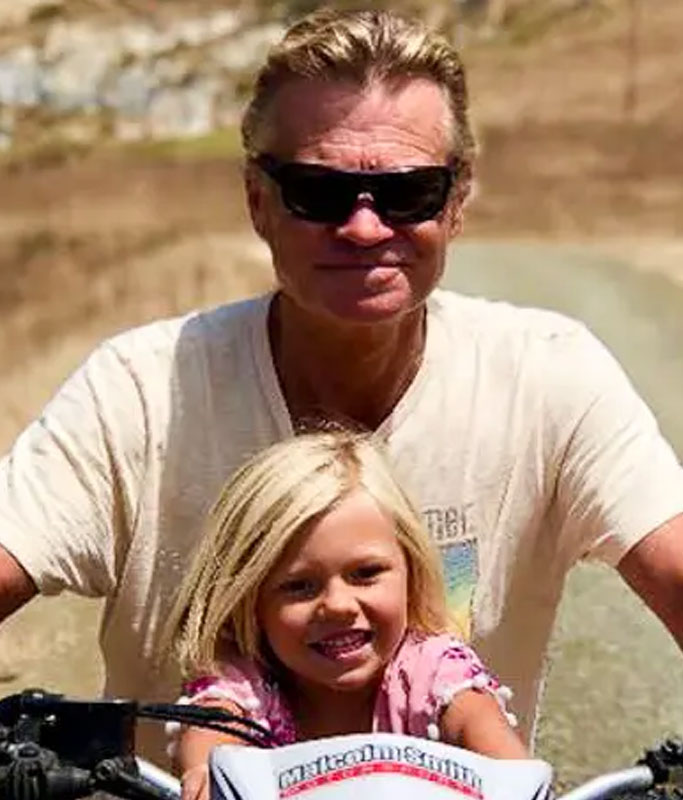
-
Dana Brown
Endless Summer Filmmakers
Learn More
Witty, upbeat surf-moviemaker from Orange County, California; writer and director of 2003’s Step Into Liquid. The son of The Endless Summer filmmaker Bruce Brown, Dana Brown was born (1959) and raised in Dana Point and began surfing at age six. He started contributing articles to surf magazines in 1986 and continued publishing into the 1990s; “Twilight in the Impact Zone,” his 1997 Surfer’s Journal feature, is a dark-humored autobiographical take on the trials of the middle-aged surfer, including divorce and alcoholism.
In the early 1990s, Brown helped his father and big-wave surfer-filmmaker Greg Noll transfer their old surf movies to video. He spent two years traveling with his father to film Endless Summer II (1994), for which he received cowriter and coeditor credits; he then worked on 50 Years of Surfing on Film (1997), a 12-part TV series produced by Opper Films and The Surfer’s Journal, and also worked on the follow-up series Great Waves (1998).
Step Into Liquid cost $2.5 million and took three years to make; it had a limited-release run in the summer of 2003; the reviews and box office numbers were both excellent. Like Endless Summer, Step Into Liquid is a cheerful and easygoing travelog, with Brown’s good natured voice-over connecting a series of vignettes from the near and far corners of the surf world. Dust to Glory, Brown’s documentary about the Baja 1000 off-road race and the follow-up to Step Into Liquid, had a limited theater release in mid-2005. He then directed Highwater, a documentary on the 2009 Triple Crown of Surfing.
Brown lives in Long Beach, California. He’s been married once and has three children. Islands in the Stream, the debut surf movie from Wes Brown, Dana’s oldest child, was released in 2004. The Browns are the only three-generation family of surf-moviemakers.
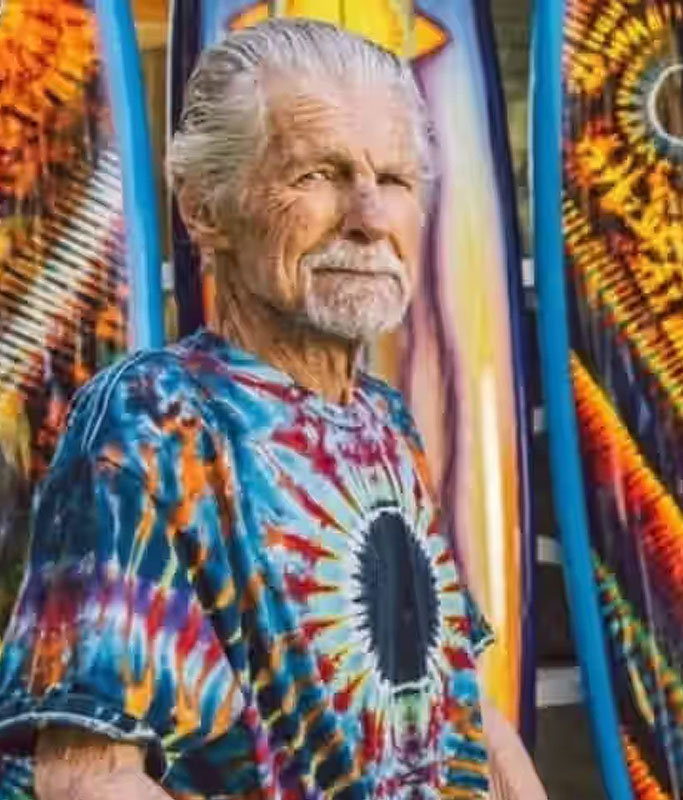
-
Mike Hynson
Surfer
Learn More
Swaggering American surfer and surfboard shaper/designer from San Diego, California; costar of the 1966 crossover hit The Endless Summer, and creator of the popular Gordon & Smith-produced “red fin” signature model.
Hynson was born (1942) in Crescent City, California, the son of a career Navy man. He spent his early years moving back and forth between Hawaii and the mainland, before settling down with his family in the mid-’50s in San Diego’s Pacific Beach, where he began surfing. Nimble and athletic, Hynson quickly became one of the area’s best riders; surfing Hawaii for the first time in late 1961, he was one of the first to ride Pipeline on Oahu’s North Shore. (Hynson’s introduction to the surf industry was less smooth: in 1959 he was arrested for stealing boards from Hobie Surfboards, and spent several days in jail.)
In 1963, right when Hynson began looking for a reason to leave the country to avoid the draft, filmmaker Bruce Brown asked if he wanted to go around the world to shoot The Endless Summer. Hynson jumped at the chance. The blond-haired regularfooter was paired with dark-haired goofyfooter Robert August; along with Brown, the two surfers visited Africa, Australia, New Zealand, Tahiti, and Hawaii. Hynson’s sublime first ride at Cape St. Francis—the right-breaking point surf the group discovered in South Africa, memorably presented as the answer to “the search for the perfect wave”—was the movie’s high point.
Hynson was a surfer of great composure, never straining, and subtly arranging his arms, legs, head, and torso into positions that would come to define proper surfing style. He was one of the sport’s great masters of trim, often letting his board run on a straight, elegant line. Handsome and cocky, Hynson was also a trendsetter on the beach, with surf racks on his Jaguar sports car, a wardrobe full of stylish clothes, and his hair always combed neatly back from his forehead, even while in the water. “He was the golden boy,” his former wife said in 2001, “and everyone wanted to be like him.”
Never particularly interested in surfing competition, Hynson nonetheless had some good results throughout the decade, placing fourth in the 1963 Malibu Invitational, second in the 1965 Tom Morey Invitational, and second in the 1969 Santa Cruz Big-Wave Contest. He was also selected for the Duke Kahanamoku Invitational in 1965, 1966, and 1967, and was a founding member of the rowdy but intensely competitive Windansea Surf Club in 1963.
A commercial surfboard shaper since 1959, and a star on the Hobie Surfboards shaping roster in 1963, Hynson returned from his Endless Summer travels, jumped over to Gordon & Smith Surfboards, and soon released the tri-stringer Hynson Model, a signature board later known as the “red fin” for its distinctive blood-red skeg. Many of the era’s best surfers rode Hynson’s boards, including Billy Hamilton, Barry Kanaiaupuni, Butch Van Artsdalen, and Herbie Fletcher. Hynson also designed and built the HY-1 and HY-2 models for Gordon & Smith, helped develop the control-enhancing “tucked-under edge” surfboard rail in the late ’60s, and created the DolFin in 1973, a popular fin design patterned after a dolphin’s dorsal fin.
In 1970, Hynson opened the short-lived Rainbow Surfboards in La Jolla, a combination surf shop and juice bar. Plagued by drug and alcohol problems since the late ’60s, Hynson later spent time in jail and lived on the streets. A long-simmering feud with Bruce Brown led Hynson to sue the filmmaker in 1995 for a share of the Endless Summer profits (the lawsuit was dismissed in 2000); at an Endless Summer reunion in 2001, however, Hynson somewhat amicably joined Brown and August to meet fans and sign autographs.
Aside from Endless Summer, Hynson appeared in more than a dozen other surf films, including Surfing Hollow Days (1962), Angry Sea (1963), Inside Out (1965), and Cosmic Children (1970). He’s also featured in a surfing sequence for Rainbow Bridge, the 1972 documentary featuring Jimi Hendrix in concert on Maui. Hynson was cited by Surfer magazine in 1985 as one of “25 Surfers Whose Surfing Changed the Sport.”
Mike Hynson—Transcendental Memories of a Surf Rebel, an autobiography, was published in 2011.

-
Robert August
Surfer
Learn More
Agreeable, clean-cut goofyfooter from Orange County, California; costar of Bruce Brown’s 1966 crossover hit surf movie The Endless Summer, and longtime surfboard shaper/manufacturer. August was born (1948) in Hermosa Beach, California, and raised in Seal Beach, just north of Huntington. He began surfing at age six, under the guidance of his father, Blackie August, a one-time Redondo Beach lifeguard who surfed with Duke Kahanamoku during the famous Hawaiian’s frequent visits to California.
August developed a smooth and relaxed wave-riding style, and later became a dependable if not spectacular competitive surfer, placing fourth in the men’s division of the 1963 West Coast Championships, third in the 1964 United States Invitational, and third in the 1965 United States Surfing Championships. He was also invited to the 1965 Duke Kahanamoku Invitational.
In his early teens, August was featured in two of Bruce Brown’s surf movies, and a few months after high school graduation (he was senior class president), the 18-year-old flew with Brown and San Diego surfer Mike Hynson to Senegal to begin filming Endless Summer. Over the next few months they traveled through Africa, India, Australia, New Zealand, and Tahiti. A live-narration version of The Endless Summer debuted on the beach-city surf circuit in 1964; the slightly modified final edition came out in 1966 to glowing reviews in Time, Newsweek, and the New Yorker. August and Hynson had no speaking lines (Brown’s narration is heard throughout), but both became minor pop culture stars.
August worked in 1965 as a salesman at Jacobs Surfboards in Hermosa. He began shaping boards in 1966, first for Jacobs, then as a Huntington-area freelancer. August opened the Endless Summer restaurant in Huntington in 1971, a venture, he later told Longboard magazine, that “set a world record for losing money.” In 1974 he opened Robert August Surf Shop in Fullerton, and two years later relocated to Huntington. The longboard renaissance, beginning in the early ’80s, was a boon to August’s business; he closed the retail store in 1998, but by 2000 his boardmaking factory was producing about 4,000 boards a year—almost exclusively longboards and longboard hybrids—and distributing them to dozens of outlets worldwide.
August had a cameo in 1994’s Endless Summer II, Bruce Brown’s long-awaited sequel, and he was inducted that year into the Huntington Beach Surfing Walk of Fame. In 2001, he was featured in Biographies, a documentary series produced by Opper Films. He also appeared in 2003’s Step Into Liquid.
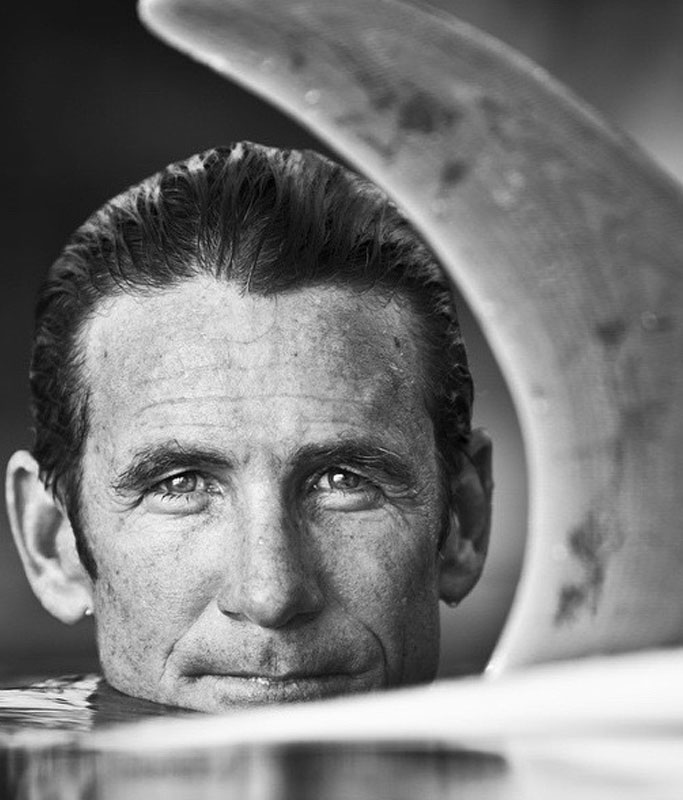
-
Robert “Wingnut” Weaver
Surfer
Learn More
Good-humored neoclassic longboarder from Santa Cruz, California; best known as a costar in the 1994 surf movie Endless Summer II. Weaver was born (1965) in Cologne, Germany; moved with his family at age three to Newport Beach, California, began surfing in 1982 at age 16, and for reasons never made clear was dubbed “Wingnut” by a group of older Newport locals. Alone among his teenage peers, Weaver was a longboard-only surfer from the beginning.
Weaver moved to Santa Cruz in 1986, spend most of ’87 and ’88 in Hawaii, and in 1990 received a B.S. in economics from U.C. Santa Cruz, In 1992 and ’93, Weaver traveled around the world shooting Endless Summer II with filmmaker Bruce Brown (creator of the original Endless Summer) and shortboarding costar Pat O’Connell. In 1997, the always congenial Weaver became the director of the O’Neill Surf Academy in Europe, conducting instructional classes sponsored by industry giant O’Neill Wetsuits in England, Belgium, Spain, the Netherlands, and Italy. Weaver later moved on to high-end private lessons and is regarded as one of the sport’s finest instructors. “He’s one of the best longboarders and nose riders of the modern era,” Outside magazine noted, adding, “he’s always cheerful, always peppy, always entertaining, and always optimistic.”
Weaver has been the headline surfer, as surfer, host, or narrator—sometimes all three—in dozens of videos and documentaries series, including Wingnut’s Search for Soul (1997), Wingnut’s Art of Longboarding (1997), and 50 Years of Surfing on Film (1997). He was also featured in Dana Brown’s 2003 hit, Step Into Liquid. An instructional book, Wingnut’s Complete Surfing, was published in 2009.
Although not a dedicated competitor, Weaver won the Santa Cruz Surf-O-Rama longboard event, held at Pleasure Point, Santa Cruz, in 1989, 1990, 1991, and 1996.
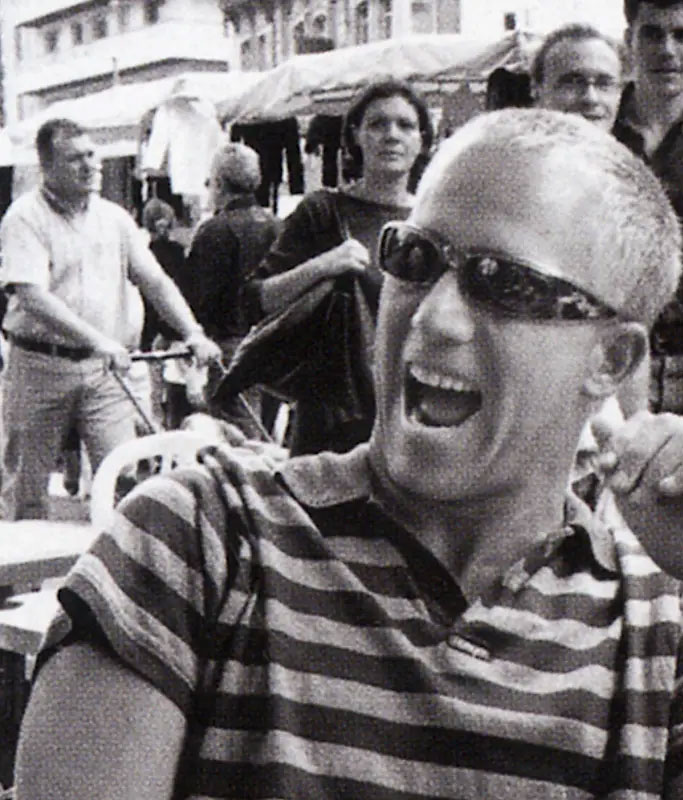
-
Pat O’Connell
Surfer
Learn More
Pro surfer from Laguna Niguel, California, best known as the skipping, giggling, permanently cheerful shortboarder from Bruce Brown’s 1994 surf movie Endless Summer II, described by Surfline as “the happiest surfer alive.”
O’Connell was born (1971) and raised just outside of Chicago, Illinois, and began surfing at age 12, after moving with his family to Southern California. Eight years later he was getting good results in the local pro contests, and in 1992 and 1993 he and Santa Cruz longboarder Robert Weaver spent 18 months shooting on location at surf breaks around the world for Endless Summer II.
When O’Connell qualified for the world championship pro tour in 1995 (he also won that year’s Katin Team Challenge), the blond-haired regularfoot was thought of as too nice to ever be a contender. “I want to be everybody’s friend,” he told Surfer magazine in 1998. “I suppose that’s a character flaw in pro surfing.” He also said that he’d recently gotten in touch with “my inner asshole”—and his 11th-place finish that year was indeed a career best.
O’Connell retired from the tour after the 2004 season. In 2009 he was inducted to the Huntington Beach Surfing Walk of Fame. O’Connell has worked for Hurley International as a marketing director and a contest organizer since the mid-2000s.
O’Connell is featured in most of Taylor Steele’s early surf videos, including Momentum (1992), Focus (1994), and The Show (1997), and was a regular in Steele’s Drive Thru series.
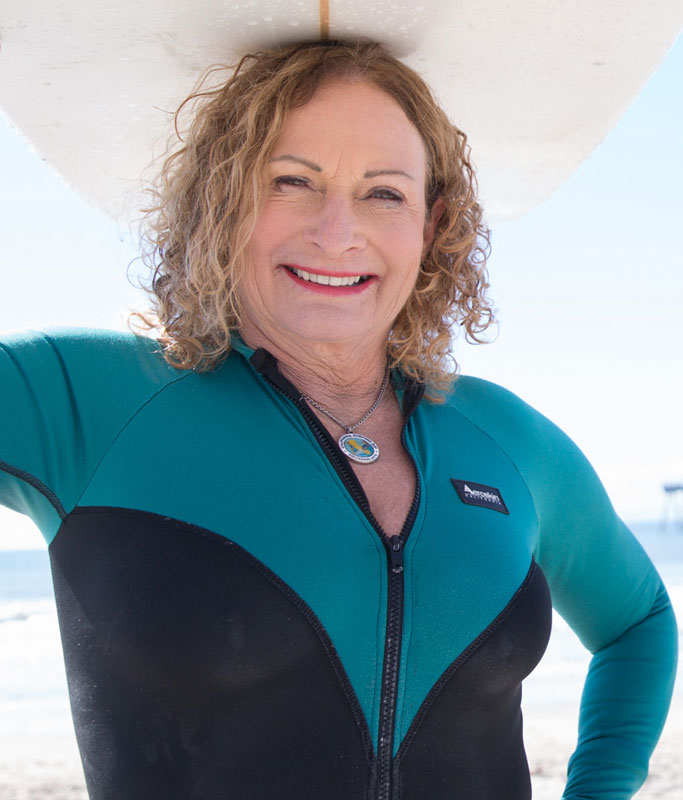
-
Jericho Poppler
Honorary Chair
Learn More
Lively regularfoot surfer from Long Beach, California; world-ranked #2 in 1979. Poppler was born (1951) and raised in Long Beach, and began surfing at age nine. She was a women’s division fixture in the United States Surfing Championships from the mid-’60s to the early ’70s, finishing fifth in 1966, sixth in 1967, fifth in 1969, first in 1970, third in 1972, and fourth in 1973. She also placed sixth in the 1970 World Championships, won the Western Surfing Association’s elite AAAA division in 1971, and placed third, with partner Hal Sachs, in the tandem division of the 1971 U.S. Championships.
Poppler then became one of the original full-time female pros, winning the 1976 Gunston 500 and the 1977 Smirnoff Pro, among other events. She was second to Hawaii’s Lynne Boyer in the 1979 title race, and retired after the 1981 season.
The original media-savvy female surfer, Poppler presenting herself as a confident and well-muscled athlete (“I’m dynamic,” she said in a 1980 interview, “I mean, look at me, I look great!”); as a sexy ingenue (lounging in a bubble bath with a bottle of champagne for a Surfer magazine portrait); and as a part-time feminist who said that men look to “conquer” waves while woman prefer to “dance, and just be part of this kingdom.” Along with top surfers of the ’60s and ’70s, Poppler said she was influenced by Marc Chagall, Rudolf Nureyev, Clara Bow, and Cyd Charisse.
In 1975, Poppler cofounded the Women’s International Surfing Association, the first all-women’s competition organization, and in 1978 she cofounded the Golden Girls promotional group. She turned her attention to environmental causes in the mid-’80s as a founding member of the Surfrider Foundation (later serving on its board of directors), and the Groundswell Society, and by working with Surfers Environmental Alliance, the Algalita Marine Research Foundation, and Kids for Clean Waves.
Poppler was featured in a small number of surf movies, including Waves of Change (1970) and Five Summer Stories (1972). In 1997, she was inducted into the Huntington Beach Surfing Walk of Fame. Poppler is married and has five children.
Sponsorship Packages
We are very excited to offer sponsorship opportunities, allowing our supporters to make an even bigger impact on the future of the California Surf Museum!
GOLD SPONSOR
$10,000
Tax Deductible:
Donation: $7,435
Tax ID #33-0215579
Be part of a history making event!
Includes:
- Appetizers, dinner and drink for 10 guests at a VIP reserved table.
- Silent and live auction opportunities.
- Branded centerpiece and one gift basket.
- 10 VIP gift bags.
- Full-page ad in the Gala program and mentions during event.
- Included in all Gala press releases, social media, and emails promoting the Gala.
- Permanent recognition at the California Surf Museum.
- One ocean view room with valet parking for a two-night stay Gala weekend at the beautiful Seabird Ocean Resort & Spa in downtown Oceanside.
SILVER SPONSOR
$7,500
Tax Deductible:
Donation: $5,111
Tax ID #33-0215579
Be part of a history making event!
Includes:
- Appetizers, dinner and drink for 10 guests at a VIP reserved table.
- Silent and live auction opportunities.
- Branded centerpiece and one gift basket.
- 10 VIP gift bags.
- 1/2-page ad in the Gala program and mentions during event.
- Included in all Gala press releases, social media, and emails promoting the Gala.
- One pool view room with valet parking for a two-night stay Gala weekend at the beautiful Seabird Ocean Resort & Spa in downtown Oceanside.
BRONZE SPONSOR
$5,500
Tax Deductible:
Donation: $3,393
Tax ID #33-0215579
Be part of a history making event!
Includes:
- Appetizers, dinner and drink for 10 guests at a VIP reserved table.
- Silent and live auction opportunities.
- Branded centerpiece and one gift basket.
- 10 VIP gift bags.
- 1/8-page ad in the Gala program and mentions during event.
- One pool view room with valet parking for Gala night stay at the beautiful Seabird Ocean Resort & Spa in downtown Oceanside.
Table Packages
Reserved Table for 10
$2,850
Tax Deductible:
Donation: $1,100
Tax ID #33-0215579
Be part of a history making event!
Get 10 of your best friends together and get a reserved table! Ticket must be purchased in one transaction. Includes appetizers, dinner (vegetarian option available), dessert and our sincere gratitude for your support.
Includes appetizers, dinner and drink, and silent and live auction opportunities.
Individual Tickets
$285
Tax Deductible:
Donation: $110
Tax ID #33-0215579
Be part of a history making event!
Includes appetizers, dinner (vegetarian option available), and dessert at the 5-star venue, assigned table seating and our sincere gratitude for your support.
Silver Surfer Award
A lifetime achievement honor, the “Silver Surfer Award” is presented annually by the California Surf Museum to a surfer who has made significant contributions to the culture and lifestyle of the surfing community and whose life has also inspired others to expand their awareness and continues to set a shining example of a true Silver Surfer. The recipient will be presented with a “Silver Surfer Award” inscribed with their name and year of honor; a perpetual “Silver Surfer Award” with names of the recipients will be housed at the California Surf Museum.
The past recipients of CSM’s Silver Surfer award are notable surfers and contributors to the surfing industry: Joey Cabell, Fred Hemmings, Paul Strauch Jr., Butch Van Artsdalen – In Memory, Marge Calhoun – In Memory, Bing Copeland, Kathy Zuckerman, Yvon Chouinard, Debbie Beacham, Lynn Boyer, Kim Mearig, Tom Morey – In Memory, Donald Takayama – In Memory, Joel Tudor, Lisa Andersen, Tom Curren, Don Hansen, Fernando Aguerre, Gerry Lopez, Jericho Poppler, Wayne “Rabbit” Bartholomew, Ian “Kanga” Cairns, Dane Kealoha, Margo Godfrey Oberg, Mark “MR” Richards, Shaun Tomson, Peter “PT” Townend, Joyce Hoffman, Nat Young, Greg Noll, Skip Frye, Linda Benson and Gary Linden.
We are asking for donations for our Gala Auctions to reach our fundraising goals.
Please consider donating gift certificates, items, experiences or services that highlight your brand. The Silent and Live Auctions are the evening’s main fundraising effort and has always delighted our guests. Click here to download donation form.

